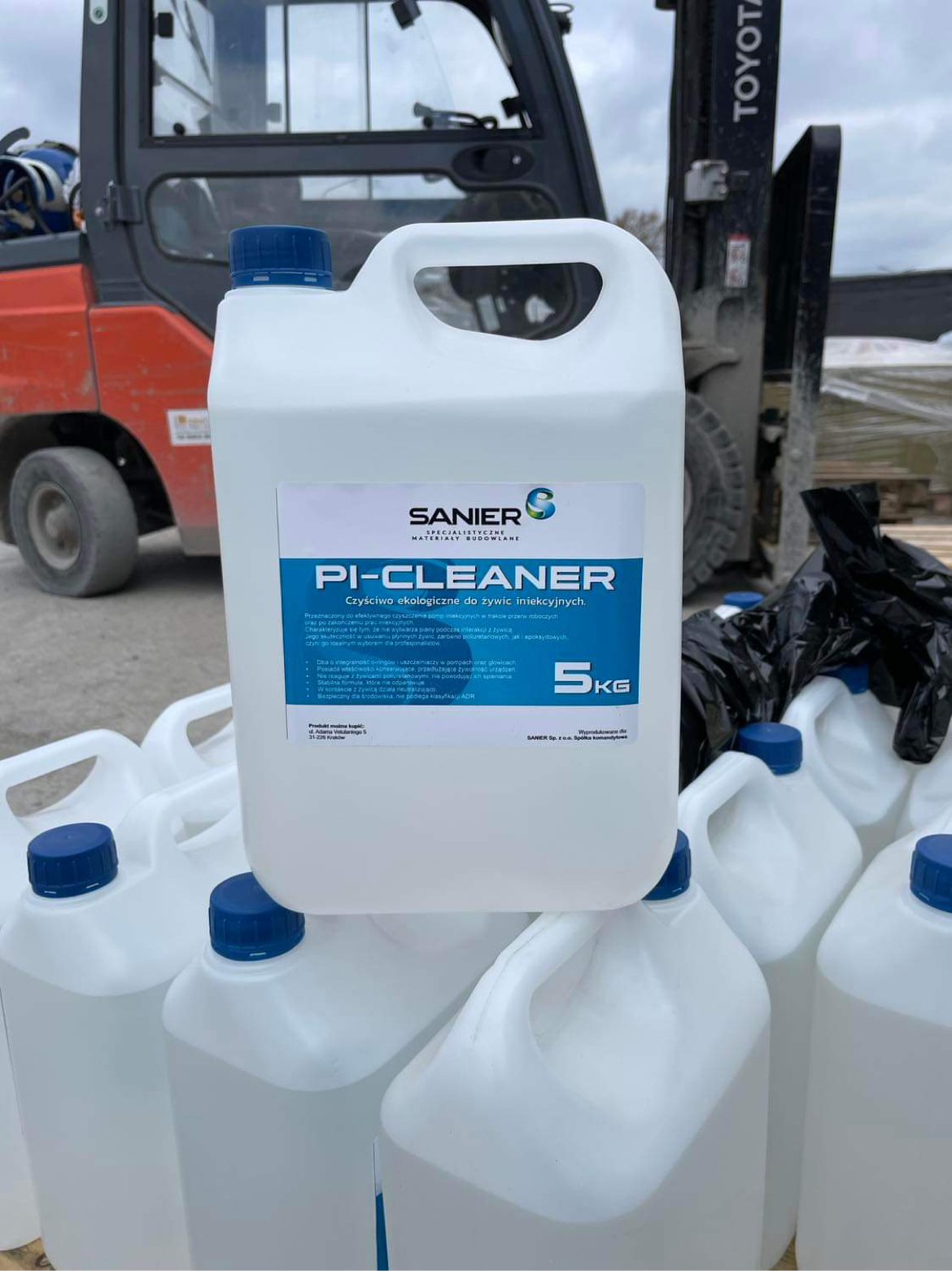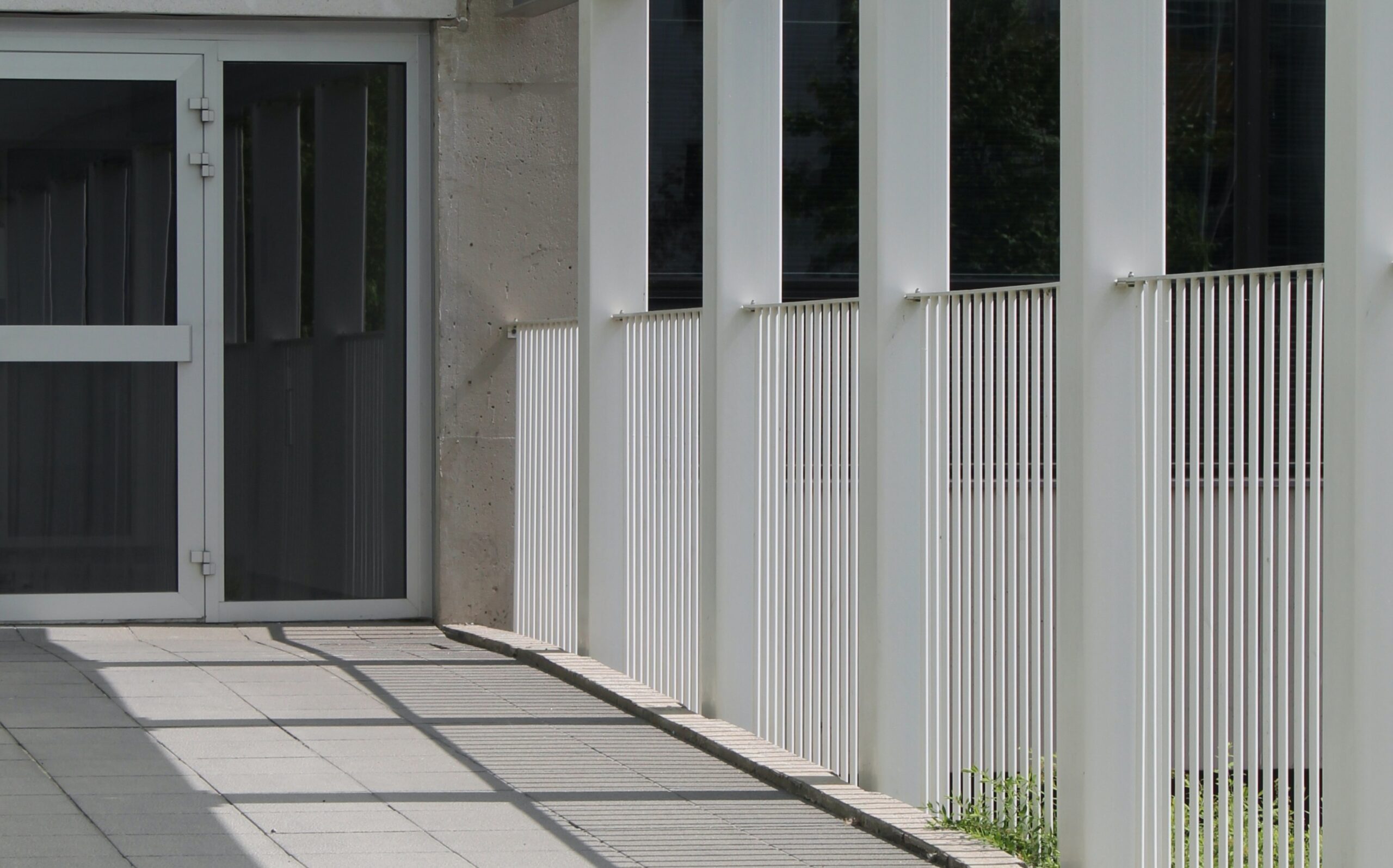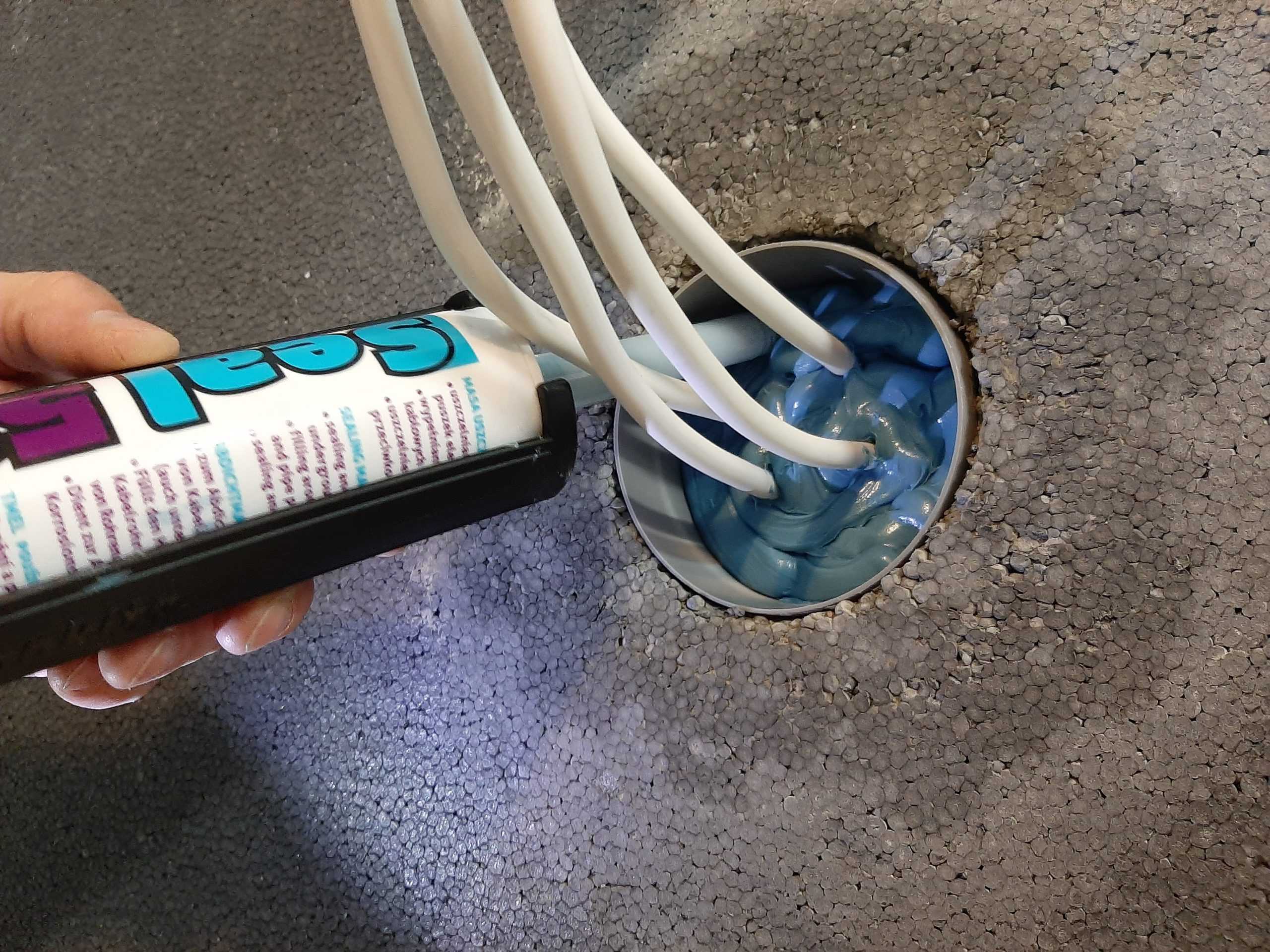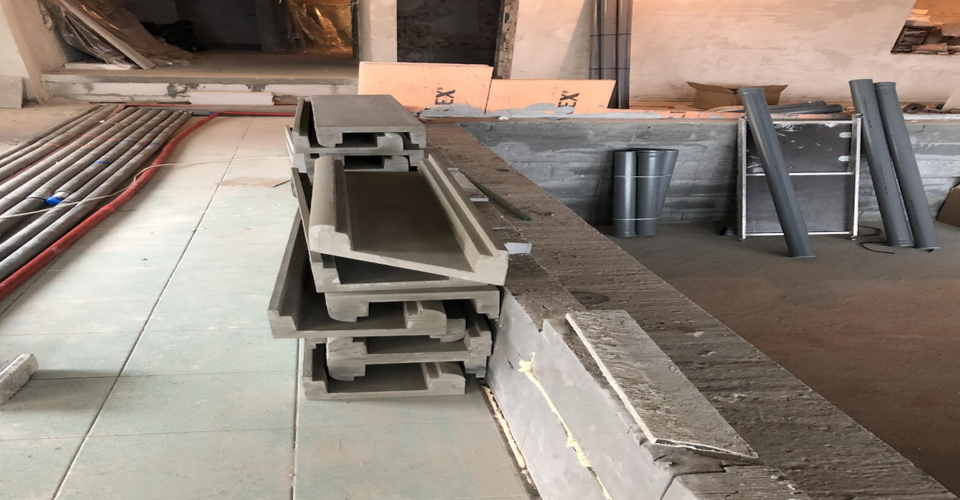
What to Use for Cleaning an Injection Pump? – Instructions for Cleaning Injection Pumps
maj 9, 2024
The Consequences of Standing Water on Balconies and Terraces
maj 28, 2024Sealing Pipe and Cable Penetrations
How to Effectively Seal Cable and Pipe Passages?
Pipe and cable penetrations through walls and ceilings are potential points for water leaks and air infiltration, which can lead to moisture issues and decreased energy efficiency. Properly sealing these penetrations is essential to protect the building from moisture, cold air, and even pests.
How to Effectively Seal Technical Openings?
- Choosing the Right Method:
- Depending on the size and purpose of the opening, select an appropriate sealing method. Options may vary from simple manual applications to advanced injection systems for larger penetrations.
- Using Suitable Sealing Materials:
- Select materials with high resistance to environmental and mechanical conditions.
- Silicone, polyurethane, or specialized resins are ideal for providing durable and effective seals.
- For future-proofing, particularly when additional pipes or cables may be added, opt for permanently elastic sealing compounds.


Why Consider Sealing Pipe and Cable Passages During the Design Stage?
Properly planning and executing the sealing of technical openings during the design and construction phases can significantly reduce future repair and renovation costs. It also ensures better structural integrity and helps maintain optimal indoor conditions.
Investing in effective sealing solutions for technical openings is a step toward long-term protection and the safety of your property. If you're unsure about the best way to secure pipe and cable penetrations in your project, consulting with experts is recommended. They can help select the appropriate techniques and sealing materials.
What Materials to Use for Permanently Elastic Sealing of Cable and Pipe Passages?
Sealing Pastes
Sealing pastes provide a quick, affordable, and reliable solution, allowing for the easy addition of new cables or pipes without the need for drilling additional openings. Here are two recommended products for cable and pipe passage sealing:
- KOESTER KB-Flex 200
- A single-component, permanently elastic sealant ideal for waterproofing pipe and cable penetrations.
- The product remains permanently pliable, allowing for easy shaping and adaptability to changing conditions.
- ANTICOR Seal 511
- A synthetic, viscoelastic, and permanently pliable sealing material resistant to moisture and pressurized water.
- It offers excellent adhesion to various surfaces, making it perfect for external and underground applications.
Koester KB-200 Flex
KOESTER KB-Flex 200 is a permanently plastic sealing material designed for securing pipe and cable penetrations through structural elements. This product is resistant to moisture and pressurized water. It does not dry out, remaining permanently moldable and elastic, with excellent adhesion to both dry and damp surfaces.
Applications
- Pipe and Cable Penetrations:
KOESTER KB-Flex 200 is ideal for permanently plastic sealing of pipe and cable passages. - Protection Against Moisture and Pressurized Water:
Designed for use in underground building structures to provide effective sealing against moisture and pressurized water. - Leak Sealing:
Suitable for sealing leaks caused by pressurized water.
ANTICOR Seal 511 - Sealing compound for cable and pipe penetrations
ANTICOR Seal 511 is an advanced synthetic, viscoelastic sealing compound specifically designed to protect installations from moisture and pressurized water. Safe for both health and the environment, it contains no harmful substances.
Properties
- Permanent Plasticity:
ANTICOR Seal 511 remains permanently plastic, ensuring long-lasting flexibility and adaptability to changing conditions. - High Adhesion:
It exhibits excellent adhesion to a variety of surfaces, including concrete, ceramics, plastics, and metals, ensuring a reliable seal in diverse applications. - Non-Hardening:
The product does not harden and retains its sealing properties throughout its service life.
How to Seal Cable and Pipe Penetrations?
Sealing installation penetrations where pipes or cables pass through openings in concrete structures is a critical step to protect a building from potential water leaks that can cause significant damage. This process requires precise execution and proper preparation.
Sealing Cable and Pipe Penetrations Using Sealing Compound
1. Surface Preparation
- Clean the pipe penetration area from dust, sand, and loose particles.
- Ensure the dimensions of the pipe penetration are appropriate: the depth-to-gap ratio (w:d) should be at least 1.5:1.
- The filling depth must be at least 8 cm. The maximum diameter of the sealed penetration is 300 mm.
- Before sealing, install a safety barrier approximately 10 cm deep, for example, using a two-component polyurethane foam.
2. Tool Preparation
- Use an applicator gun (310 ml cartridge) for the sealing compound.
- Ensure the nozzle of the applicator is clean and ready for use.
3. Sealing Compound Application
- Heat the compound to 30–40°C before application. For instance, immerse the product in warm water (approximately +40°C) for 15 minutes before use. Extend the heating time in colder conditions for optimal consistency.
- Insert the cartridge into the applicator gun. Begin applying the sealing compound at the deepest point of the penetration, moving outward, ensuring the compound fills at least 8 cm in thickness.
- When sealing cable penetrations, lightly move the cable back and forth a few times after applying the compound to eliminate air gaps. Refill any voids as needed.
- Ensure the cable does not touch the wall after sealing.
- Press the compound firmly with a metal spatula and smooth the surface. Leave a minimum of 1 cm space between the compound and the face of the structural wall, which should then be filled with mortar as an additional seal.
4. Adding Additional Cables
- If additional cables need to be passed through, remove the mortar, thread the cable through the sealing compound, and, if necessary, reseal using the sealing compound.
Additional Notes
- Always refer to the product's safety data sheet and follow the manufacturer's guidelines for safe and effective use.
- Proper preparation and application ensure long-lasting and effective protection against water penetration.


Sealing Cable and Pipe Penetrations with Resin
1. Removal of Existing Filler
The first step is to remove any existing filler material between the pipe and the concrete opening. This ensures a clean and accessible space for the sealing process.
2. Drilling Holes
Drill at least two holes: one for resin injection and another for ventilation. These holes are essential to ensure proper distribution of the sealing resin in the space between the pipe and the concrete.
3. Cleaning and Degreasing
Thoroughly clean and degrease the space to ensure optimal adhesion and effectiveness of the sealing resin.
4. Preparing a Seal
Before filling the space with resin, prepare a closure to prevent the resin from leaking during the application process. This step is critical for effective sealing.
5. Installing Packers
Install packers, including a venting packer without a grease fitting, to facilitate controlled resin injection into the space.
6. Preparing Resin and Pump
Prepare the appropriate pump and resin for the application. The choice of resin should be based on specific structural and environmental requirements.
7. Filling the Space with Resin
Inject the resin into the space, monitoring the process until it begins to flow out of the venting packer. This indicates that the space is fully and evenly filled with resin.
8. Removing Packers and Cleaning
Once the space is filled, remove the packers and thoroughly clean the work area.
Important Note
For large openings in concrete, improper sealing can lead to significant damage. For example, if a hole is drilled in the wrong location and a new one needs to be made, the previous hole must be professionally sealed. If such holes are filled with inappropriate materials like standard gypsum, they may still allow water to penetrate, leading to further issues.










